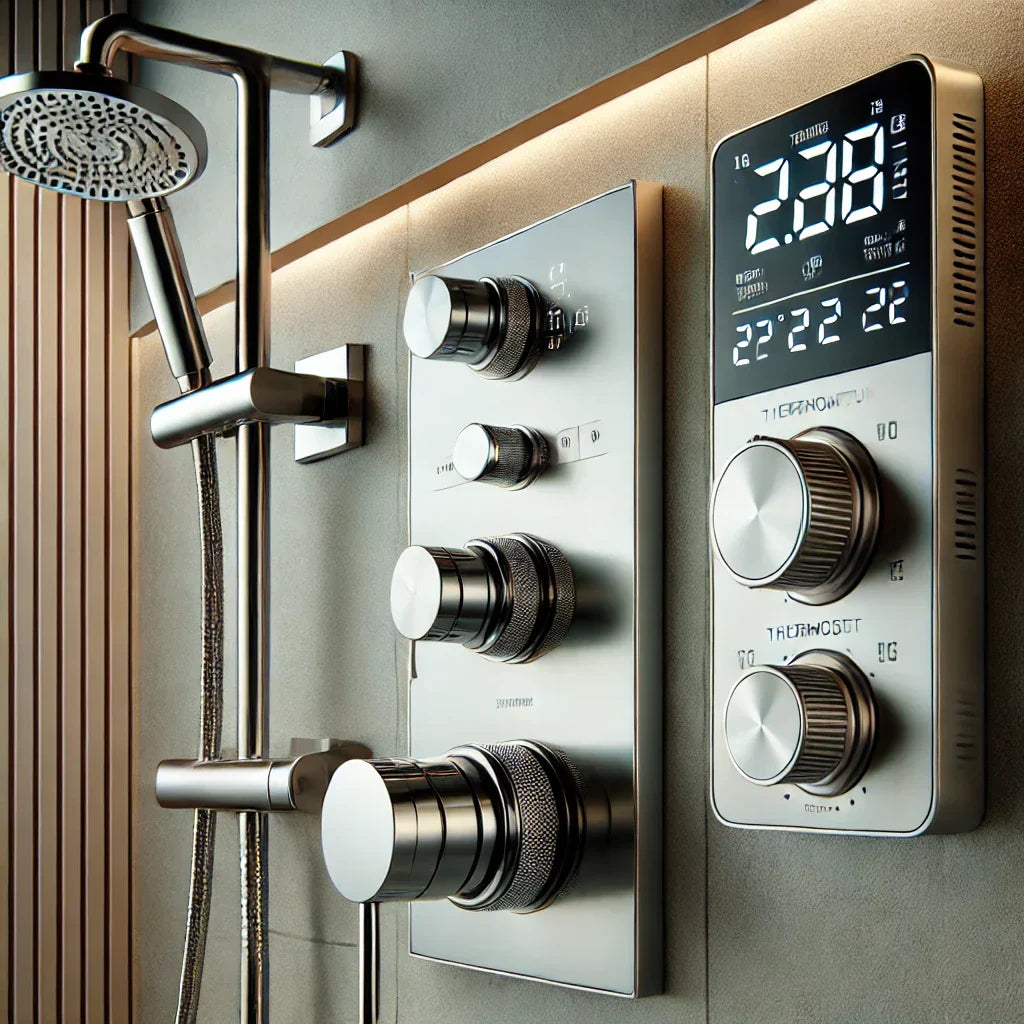
Guide to Thermostatic Mixing Valves
Share
When it comes to bathroom comfort, precise temperature control can make a world of difference. Understanding how thermostats and thermostatic mixing valves (TMVs) work can help you create the perfect balance between comfort, safety, and efficiency in your shower setup. In this guide, we’ll explore the role of each, compare their benefits, and help you determine the right choice for your needs.
Understanding Thermostats
Thermostats play a key role in regulating water temperature. In bathrooms, thermostats monitor and adjust water temperature to maintain a consistent level, regardless of fluctuations in the main water supply. By controlling the heating element, thermostats help ensure comfort and prevent sudden temperature changes.
Explore compatible shower systems for seamless integration with thermostats.
Exploring Thermostatic Mixing Valves (TMVs)
Thermostatic mixing valves (TMVs) are advanced devices designed to blend hot and cold water to a pre-set temperature before it reaches the showerhead or faucet. TMVs are especially useful in situations where high water temperatures may pose a risk, as they automatically adjust the water mix to maintain a safe, steady temperature.
Pair TMVs with shower heads to maximize comfort and efficiency.
Thermostats vs. Thermostatic Mixing Valves: Key Differences
- Temperature Consistency: Thermostats maintain water temperature through the heating system, while TMVs directly blend hot and cold water to maintain a steady output temperature.
- Safety: TMVs have a built-in safety feature that prevents scalding by limiting the maximum water temperature. Thermostats may require manual adjustments if the water supply fluctuates.
- Installation: Thermostats are usually installed as part of the heating system, while TMVs are typically fitted closer to the faucet or showerhead.
- Applications: TMVs are ideal for bathroom faucets and showers where consistent temperature control is essential, while thermostats are used throughout the home’s heating and water systems.
Benefits of Thermostats and TMVs
Benefits of Thermostats:
- Provides consistent temperature control throughout the home.
- Enhances energy efficiency by adjusting heating based on need.
- Helps prevent unexpected temperature fluctuations.
Benefits of Thermostatic Mixing Valves:
- Reduces the risk of scalding by limiting maximum water temperature.
- Ensures a steady, comfortable water temperature in showers and faucets.
- Ideal for households with children or elderly individuals who may be sensitive to water temperature changes.
For extra safety, consider installing adjustable slide bars to optimize accessibility.
Choosing the Right Solution for Your Shower
If you’re focused on creating a safe, comfortable shower experience, a thermostatic mixing valve is an excellent addition. It provides real-time temperature control, which is especially beneficial in homes where the water pressure or temperature may fluctuate. Thermostats, meanwhile, work best as part of a whole-home system to maintain comfort and efficiency across different rooms.
Installation and Maintenance Tips
To get the best performance, thermostats and TMVs should be installed by a professional. Regular maintenance, such as inspecting for mineral build-up or signs of wear, will help keep these devices functioning optimally. Check your device’s manual for specific maintenance instructions to ensure longevity and efficiency.
For easy maintenance, check out our range of shower accessories for cleaning tools and replacement parts.
Conclusion
Understanding the roles of thermostats and thermostatic mixing valves can help you make an informed decision for your bathroom setup. Whether you prioritize safety, comfort, or efficiency, these tools provide essential temperature control that enhances your overall shower experience.
Explore our blog for more insights into optimizing your shower setup!
